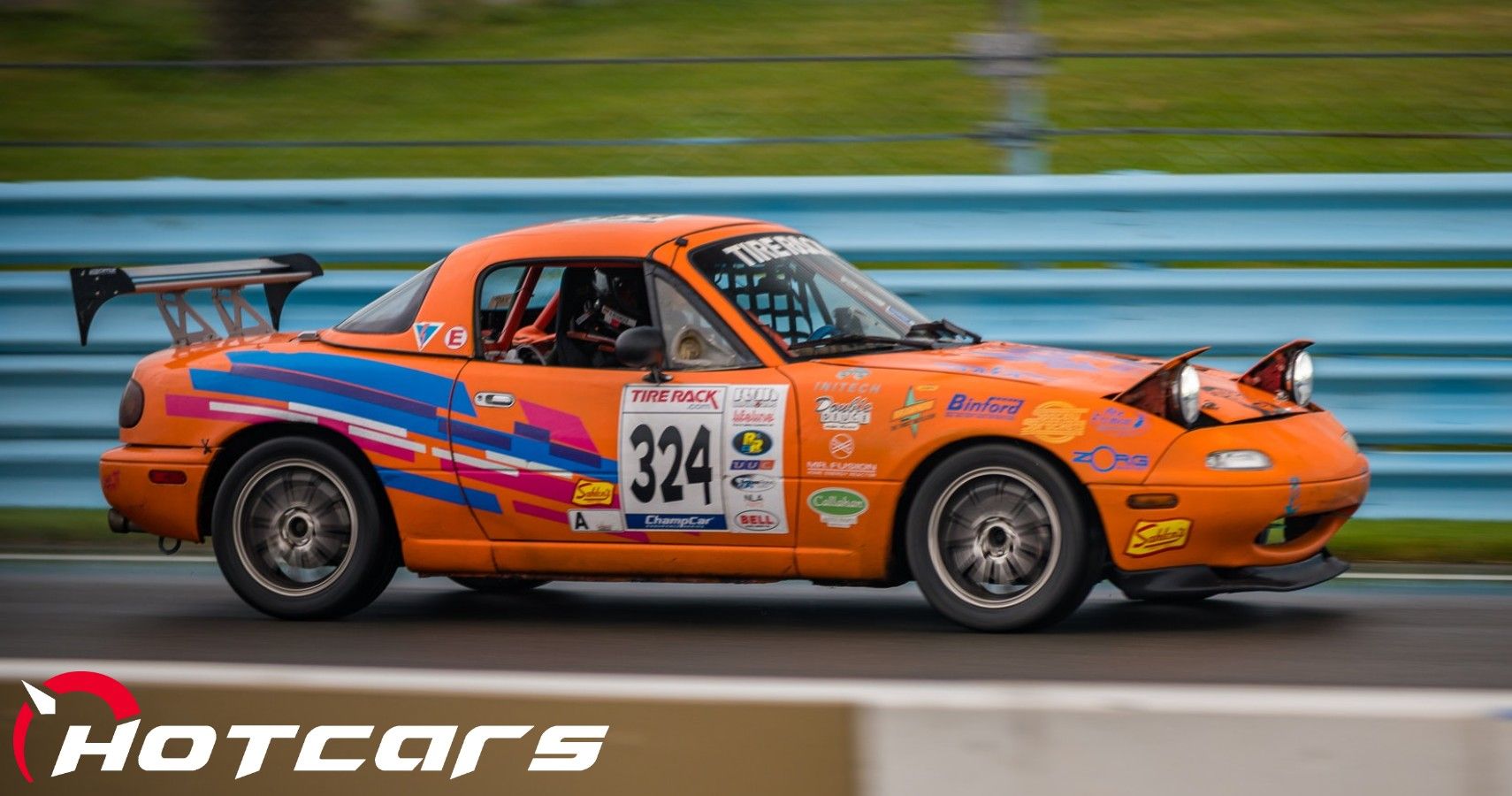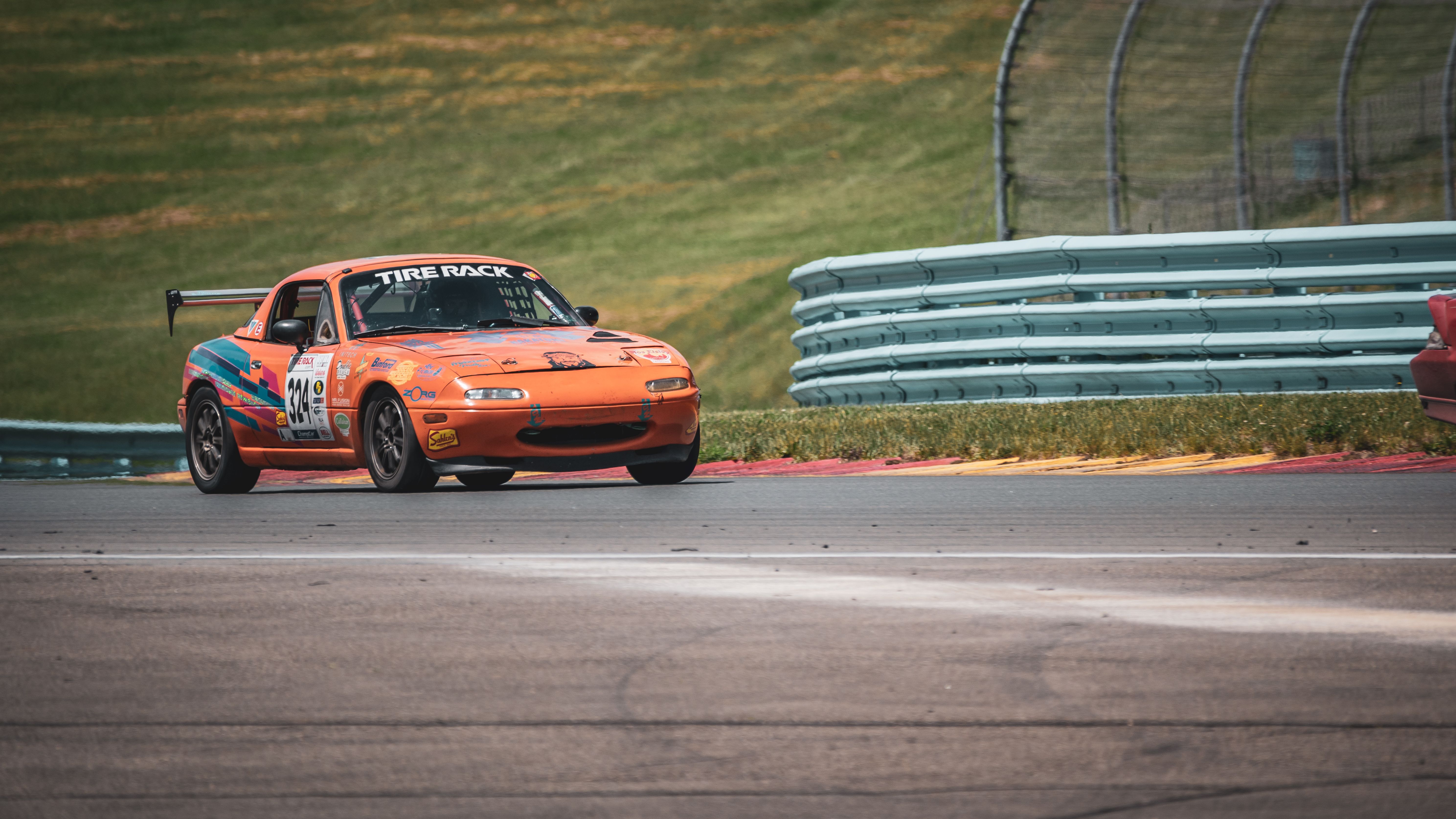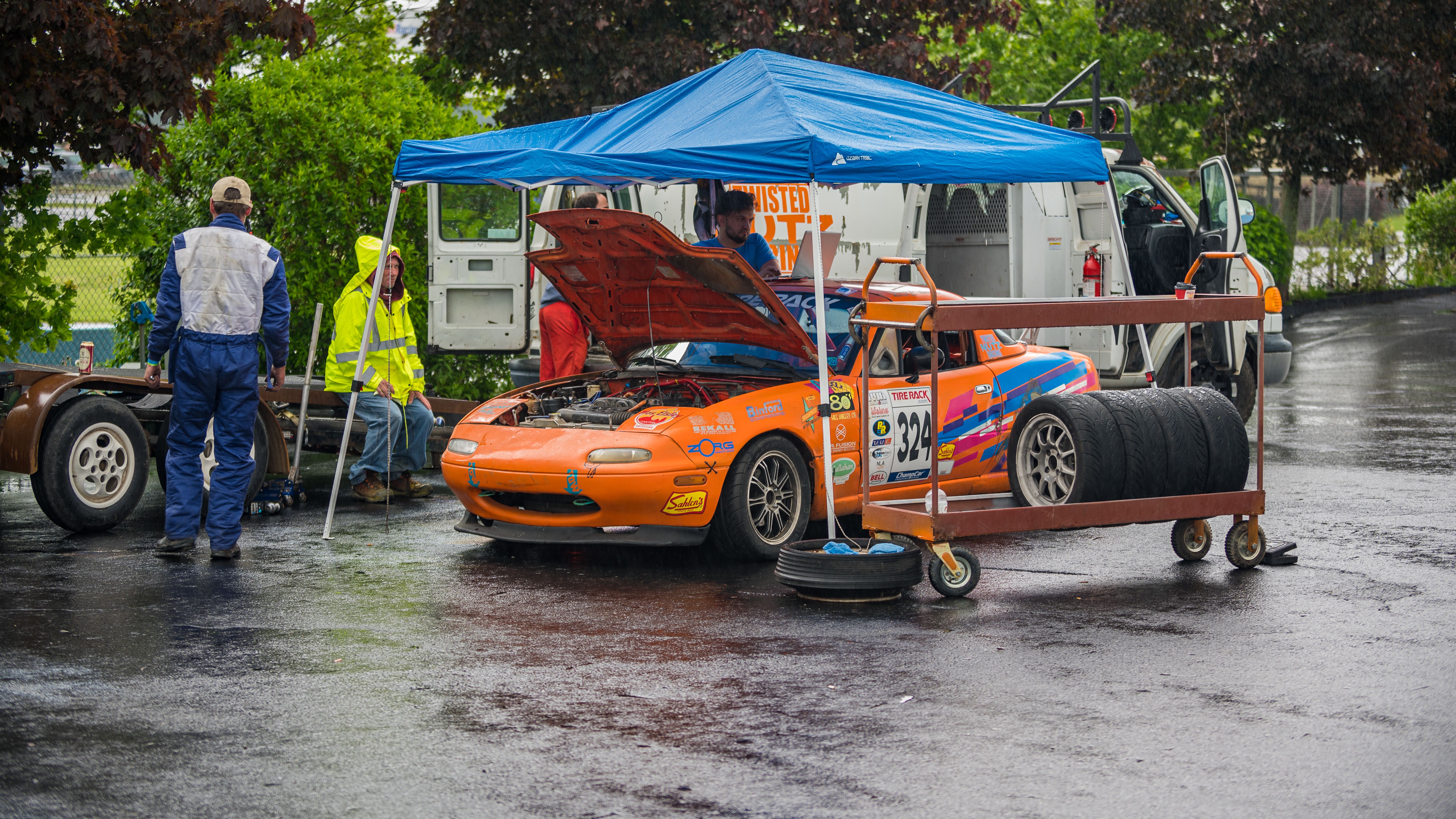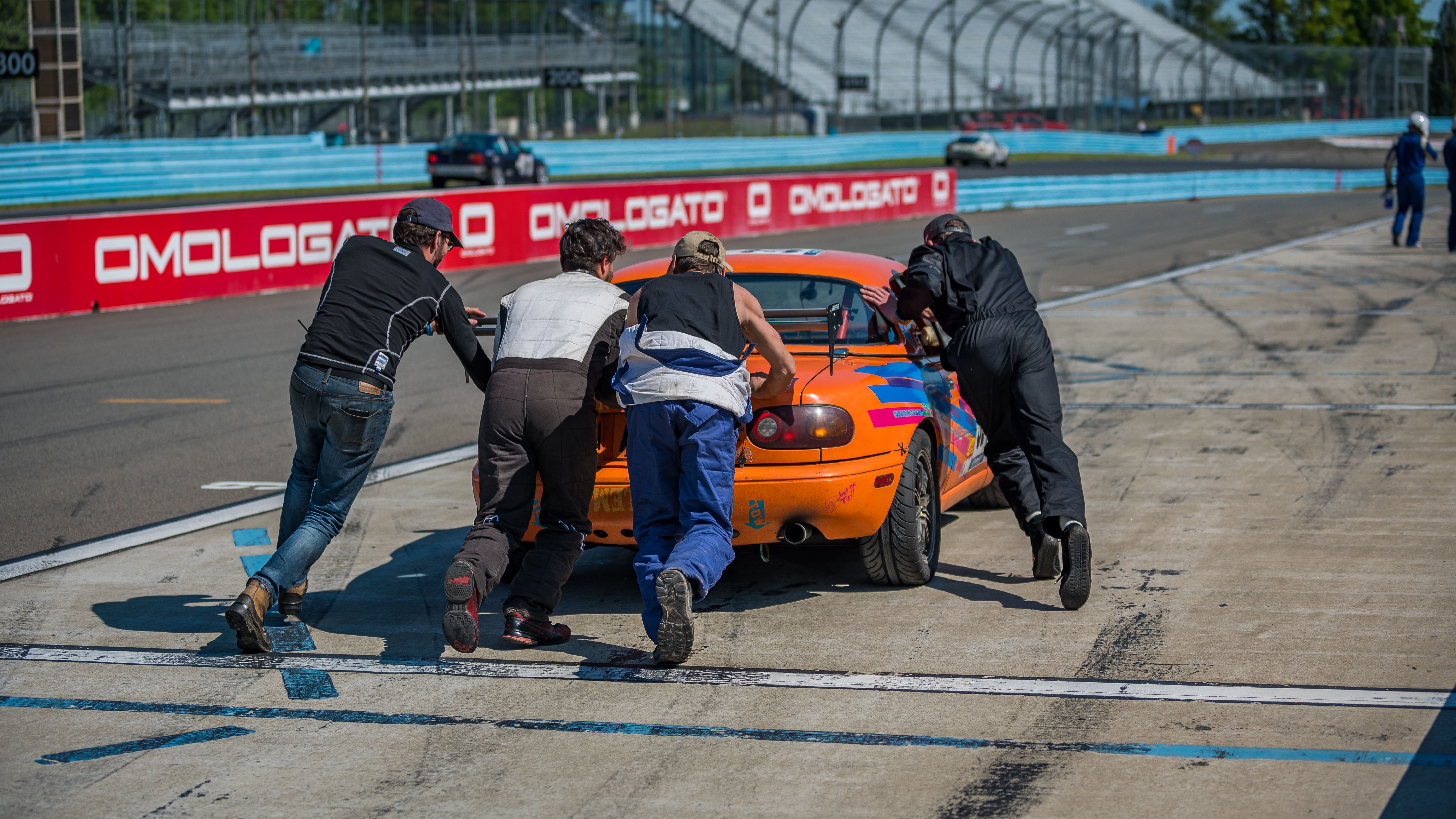Endurance racing is not for the faint of heart. If you followed any of the coverage from last weekend's 24 Hours of Le Mans, you know that even at the highest level, endurance racing can be absolutely heartbreaking. While speed is critical, the most important factor in endurance racing is reliability. Last month we traveled to the legendary Watkins Glen International to drive a Mazda MX-5 Spec Miata in the ChampCar Endurance Racing Series. This is how it went.
ChampCar is not like Le Mans. Far from it, to be honest. But the roots are all there. In order to win you must have the perfect combination of speed and reliability. Our car had neither of these things.
A former Spec Miata would seem reliable from an outsiders' perspective, but at a closer glance the picture changes. The amount of abuse this particular car has taken over the years is quite evident, so it shocked us that it turned a single lap. Impressed after a dozen laps. Amazed after 100 laps.
This 1994 Mazda MX-5 Spec Miata, acquired by its current owner in a driveway negotiation, is a true budget racecar. “Paint my car, and I’ll trade you my Spec Miata,” is how the deal went down. Several years later, the owner, Charlie, has entered this retired Spec Miata in numerous ChampCar events along with 24 Hours of Lemons. Under the bent and bruised hood that looks like it came from a salvage yard, is a 1.8-liter four-cylinder swapped from a different Miata. There’s a welded roll cage, fire suppression system, a headache-inducing MegaSquirt ECU, and sticky Maxxis tires at all four corners. That’s pretty much it.
1994 Mazda MX-5 Spec Miata
- Lightweight
- Improved Aerodynamics
- Excellent Stopping Power
- Sticky Maxxis Tires
- Racing Approved Roll Cage
- Fire Suppression System
- Model: MX-5 Spec Miata
- Engine/Motor: 1.8-Liter 4-Cylinder
- Horsepower: 129 @ 6,500 RPM
- Torque: 112 lb-ft @ 5,500 RPM
- Drivetrain: RWD
- Transmission: 5-Speed Manual
- Excellent Handling
- Great Platform For New Drivers
- Parts Are Widely Accessible
- Lack Of Power
- Tight Fit For Taller Drivers
Cost Of Entry
A Mazda MX-5 Spec Miata used to be cheap. Most ‘NA’ Generation Miatas used to be inexpensive. While that is no longer the case, you can currently get yourself into a Spec Miata for under $20,000. We saw a listing for a race-ready Spec Miata posted above a urinal in the bathroom at Watkins Glen for $6,500. Online listings are far higher. Our recommendation is to rent a seat with a team to see if endurance racing is something you’re really interested in before spending thousands of dollars on a car, a trailer, brakes, tires, and other parts needed to go racing. Renting a seat for a weekend typically costs between $1,500 and $3,000 and comes with none of the headaches of true ownership.
Getting Fitted
Driving a former Spec Miata is tricky for a number of reasons. The factors that hindered our driving experience the most were size and reliability, it's not a new MX-5 after all. Oh, and it was really slow. Let’s get size out of the way. Normally you aren’t supposed to bring bias, personal opinions, or yourself into a car review. But in this particular review, that’s nearly impossible. I’m tall and skinny— 6-foot-4 to be exact. A Spec Miata is both too small, and too big for me, somehow. My legs don’t fit. My right leg rests on the quick-connect steering wheel, and my left leg hovers over the clutch, waiting for another shift. But in-between shifts my left leg just hovers. The clutch pedal hangs so closely to the roll cage there is no room for a ‘dead pedal’ or anywhere to rest you left foot. It’s a very tight squeeze, especially for hours at a time. With a racing helmet fitted, my head rests less than an inch from the roll cage.
There are tons of modified Mazda MX-5 cars out there, and most feel cramped for taller drivers. I’m also too small—well, at least for the particular seat fitted in this Spec Miata. It was necessary to fit additional padding inside the racing bucket seat to account for my small waist. Even with these pads, I was still begging for less slack on the 5-point racing harness around my waist during seat fitting. It’s an eerie feeling strapping yourself inside a racecar. Hoping that you will not need any of the safety equipment, yet hoping all of it is in perfect order in the event that you do, in fact, need it.
So our word of advice is this: if you’re over 6-feet tall, maybe try and find a seat in a different sports car. A bigger sports car. The Spec Miata is not kind to the taller gentleman racer.
(Lack Of) Reliability
So then let’s discuss reliability. As a "driver-for-hire," the perfect case scenario in endurance racing is to show up to the track and drive the exact amount of time agreed upon with the team. We discussed four hours of track time prior to race weekend. Due to broken parts, ECU issues, and an overall lack of reliability; that number ended up short of three hours.
It’s tough to go to the racetrack and spend the majority of the time in the paddock. It’s tough to stay disciplined about saving money to get there. Skipping nights out with friends. Saying "no" to other things in your life that you would, genuinely, like to do if you had some extra money - it’s tough. But when you get out there on track, and you drive at the limit, there is just nothing else that compares.
When the car breaks, you heart melts. You don’t want to limp into the pits to avoid further damage. You want to stay out and keep pushing. Unfortunately, grassroots endurance racing is all about making the car last and turning lots of laps. Quantity over quality. Quantity over quick times. You need to be on track longer than the competition. So when you run into reliability issues like cracked coolant lines, blown heater cores, finicky tunes, and broken differential bolts; it’s difficult to stay positive. All of these things failed throughout our weekend racing at Watkins Glen International. Just because a first-gen Mazda MX-5 Miata is generally reliable, that doesn’t mean that a Spec Miata is reliable. Not after its seen hundreds of laps and made contact with other cars and been, for lack of a better term, abused.
The Silver Lining
When it’s in good running order, though, a Spec Miata is an excellent racecar. It’s incredibly predicable and confidence inspiring. You can brake later than a Camaro or a Corvette or a Mustang—and even some of the Bimmers. It’s light and small, you only need to point and shoot, and there’s no power to get you in trouble. If you can fit, and even if you can’t, everyone should race a Miata.
Strap yourself into a tiny coffin and drive vigorously with others on a racetrack. With more than 90 cars registered, and nearly that many on track at any given time, it’s controlled chaos. It’s lovely, romantic, and crazy. You brake as late as possible and hope that the tires grip and the brake pads clamps and the calipers compress, and you push as late as possible to carry as much momentum as possible. That’s the Spec Miata method. Carry speed and grip where other cars can’t, and get the hell out of the way on the straights when other’s have more horsepower.
Throughout the weekend we experienced sideways rain and picture-perfect sunshine. We experienced triumph and defeat. When the car breaks you want to give up. When it's fixed, all you want to do is get back out on track. It’s a toxic relationship in a way. First it gives, then it takes away.
Why Go Racing?
Endurance racing can teach you a lot about yourself. It helps you explore your own limits. It allows you to experience speed in a controlled environment. It teaches you about patience and problem-solving and why so many people race the NA Generation Mazda MX-5 Miata. When they are good, they are great. When they break, you make friends with the competition and find a way to fix the car to get back on track. Once you’ve driven one, all you want to do is get back on track.
With a relatively low cost of entry, a series like ChampCar and a Spec Miata are an excellent starting point for any aspiring racing driver or car enthusiast looking for a weekend thrill. While a Spec Miata may not be the best choice for taller drivers, it is an excellent formula for fun. If you have the time and the means, we highly suggest getting out on track and experiencing the thrill of wheel-to-wheel racing for yourself.











